Abstract
In an attempt to assess hepatic functional capacity, hourly urea production, and corresponding serum amino acid concentrations after the ingestion of single protein meals (60, 120, and 240 g of protein) were evaluated in 18 normal subjects and in 8 patients with liver disease. In normal subjects, the relationship between urea production and serum amino acid concentration was linear (urea production in milligram urea nitrogen/kilogram lean body mass/hour = 6.3 times mg amino acid nitrogen/100 ml minus 20.5 SE of the estimate 6.9, r = 0.74, P less than 0.001), and variation of protein intake from 50 to 150 g/day for 3 days before testing did not change this relationship. The patients demonstrated impairment of urea synthesis proportional to the clinical severity of their liver disease. The potential clinical applications of these findings need to be determined.
Full text
PDF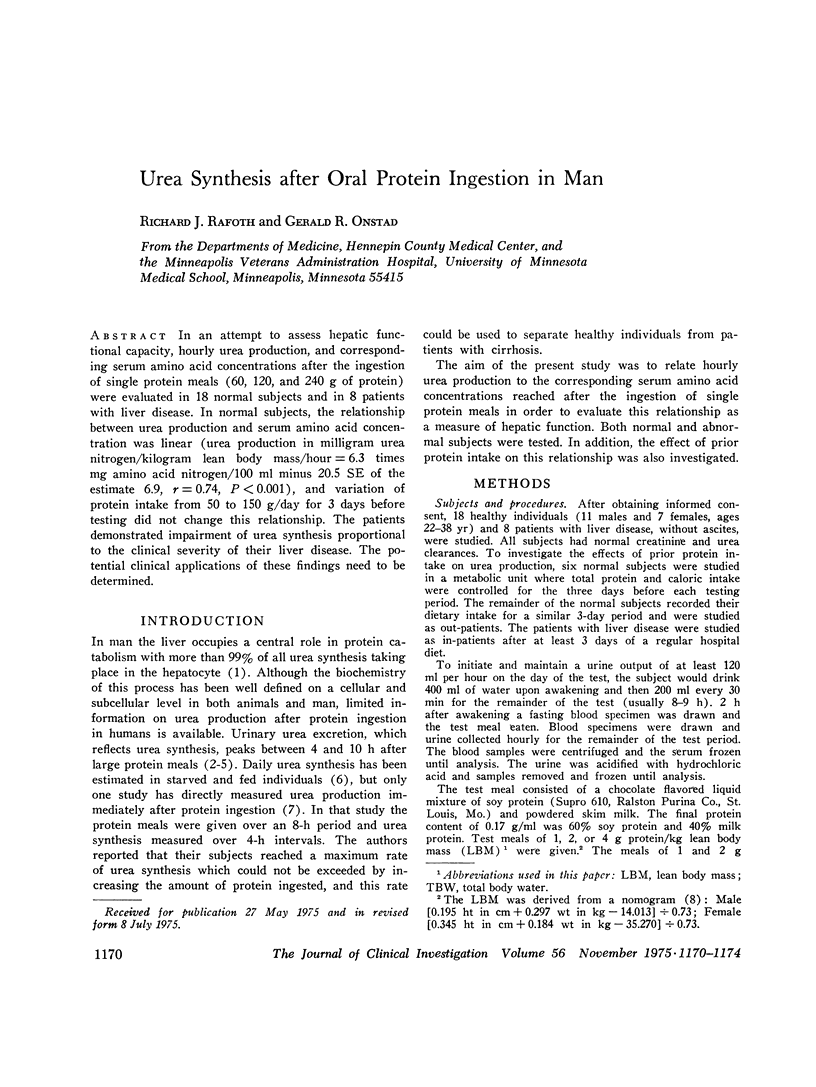
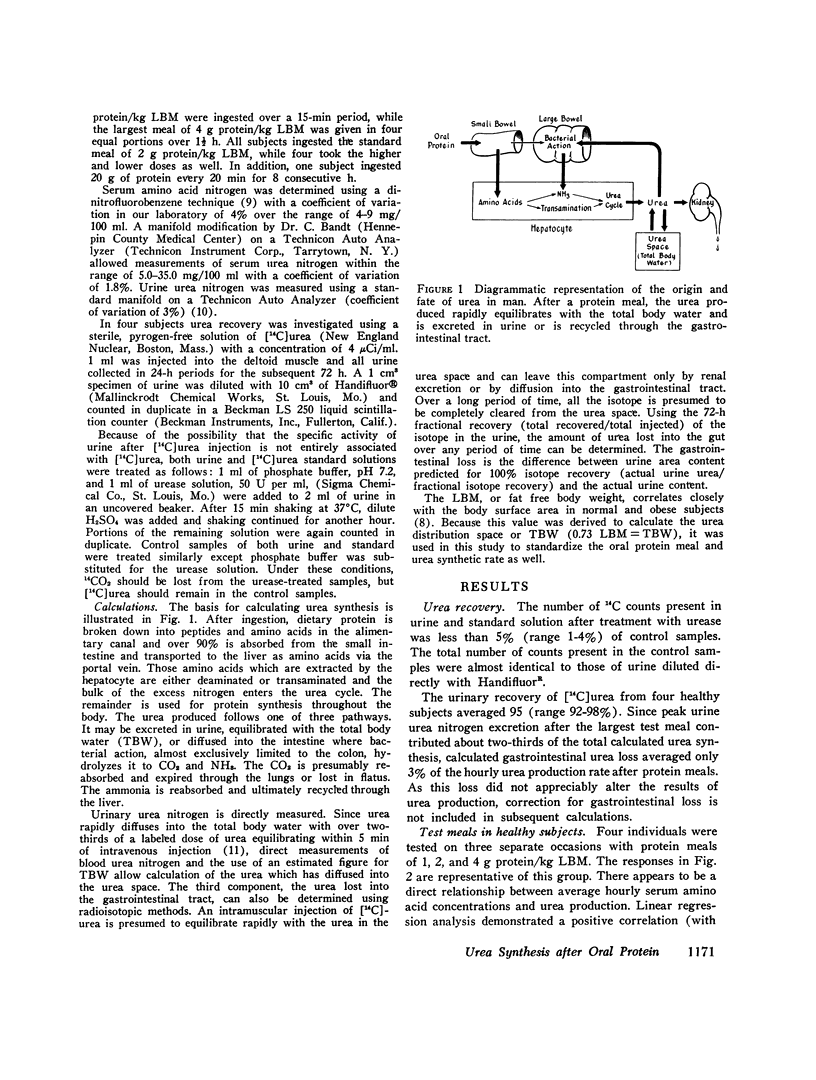
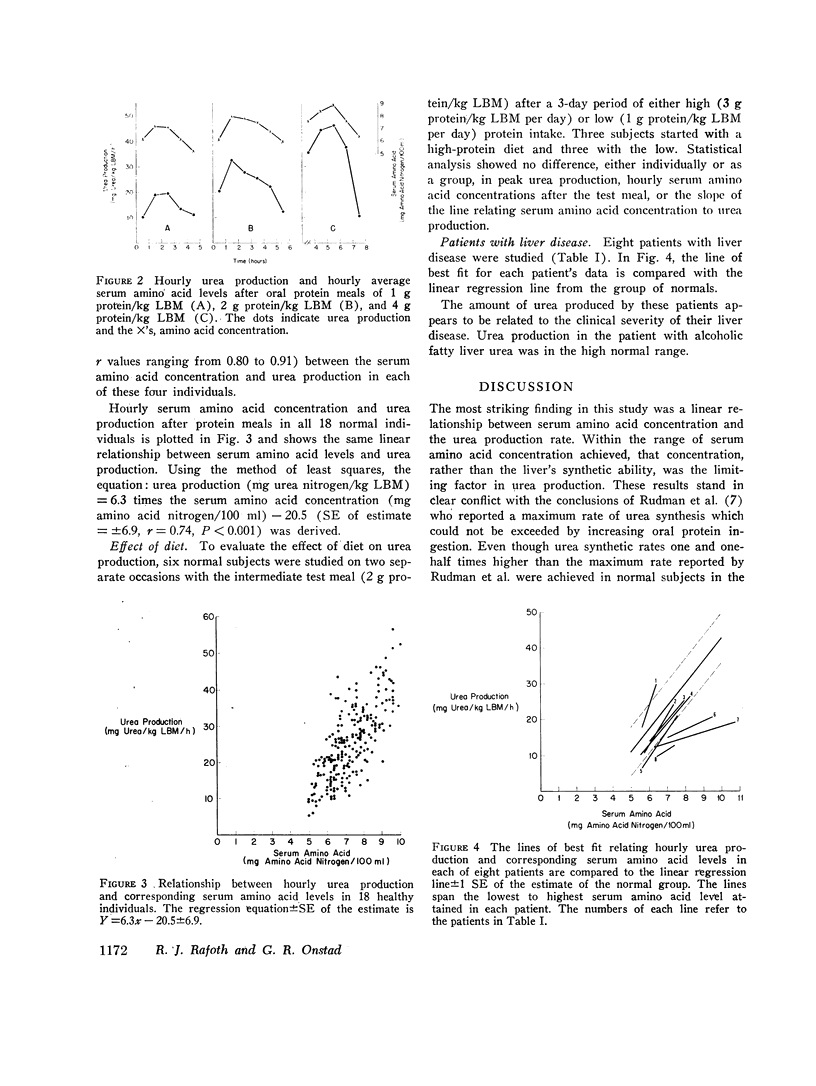
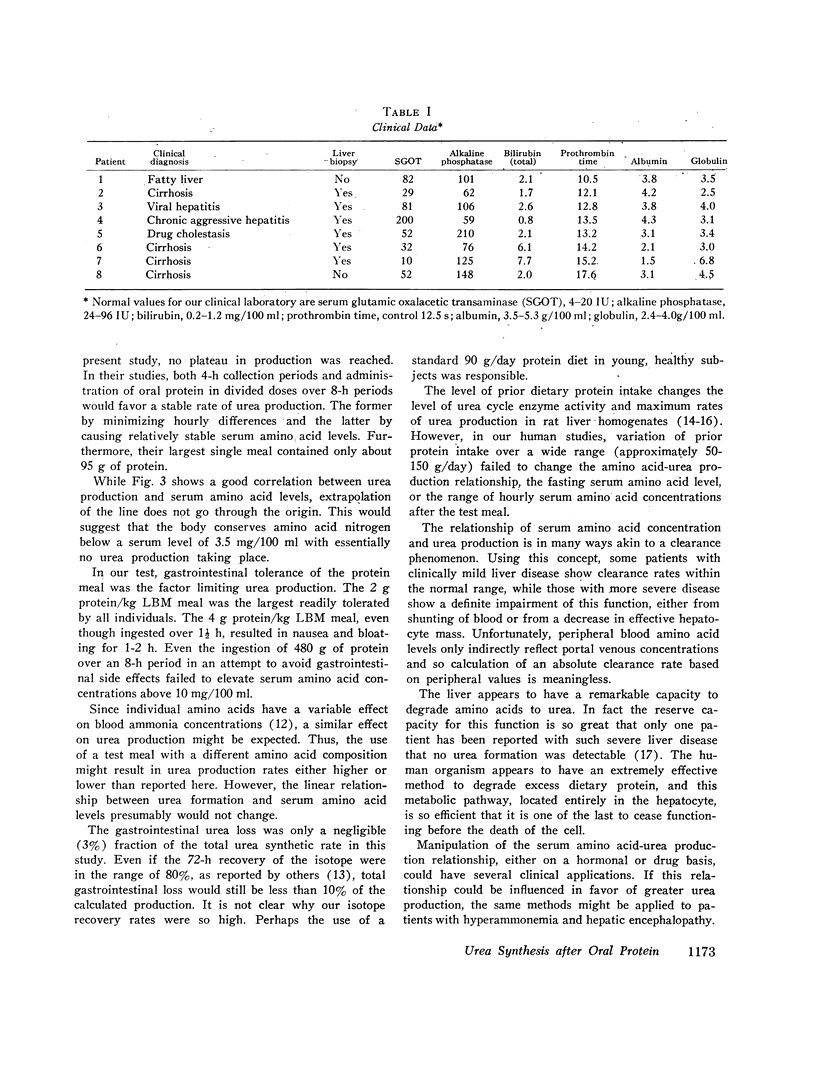
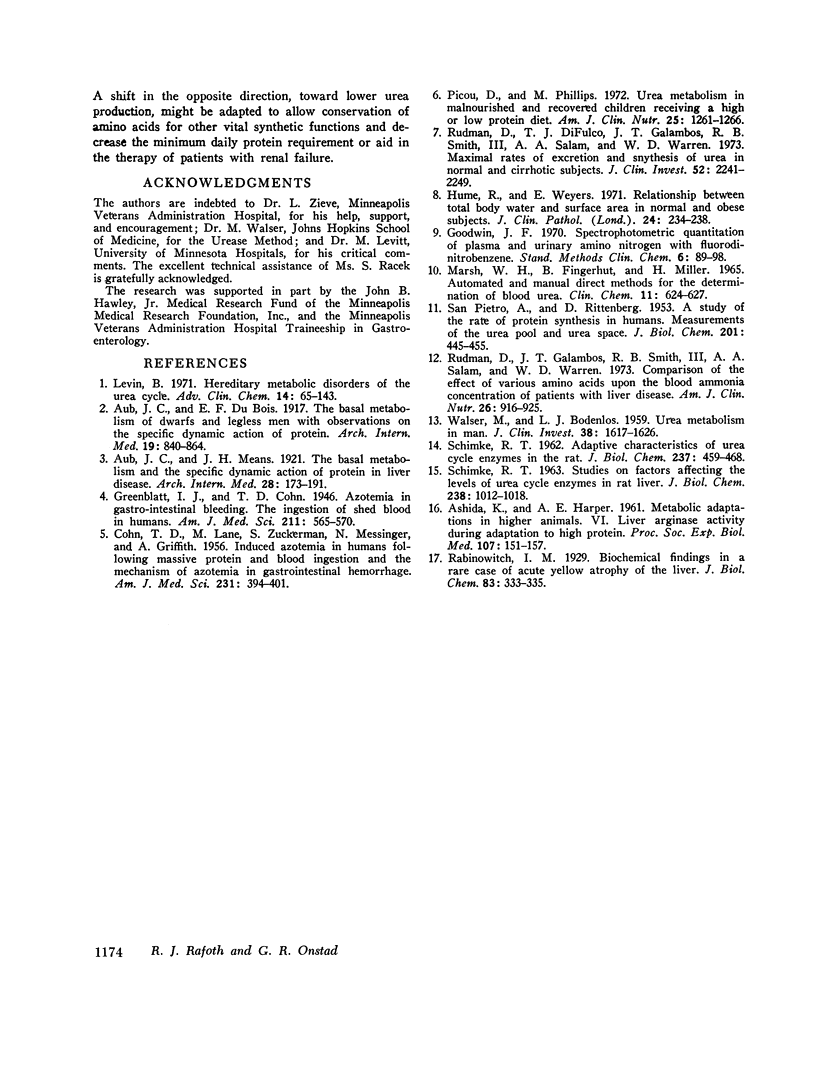
Selected References
These references are in PubMed. This may not be the complete list of references from this article.
- ASHIDA K., HARPER A. E. Metabolic adaptations in higher animals. IV. Liver arginase activity during adaptation to high protein diet. Proc Soc Exp Biol Med. 1961 May;107:151–156. doi: 10.3181/00379727-107-26563. [DOI] [PubMed] [Google Scholar]
- COHN T. D., LANE M., ZUCKERMAN S., MESSINGER N., GRIFFITH A. Induced azotemia in humans following massive protein and blood ingestion and the mechanism of azotemia in gastrointestinal hemorrhage. Am J Med Sci. 1956 Apr;231(4):394–401. doi: 10.1097/00000441-195604000-00004. [DOI] [PubMed] [Google Scholar]
- Hume R., Weyers E. Relationship between total body water and surface area in normal and obese subjects. J Clin Pathol. 1971 Apr;24(3):234–238. doi: 10.1136/jcp.24.3.234. [DOI] [PMC free article] [PubMed] [Google Scholar]
- Levin B. Hereditary metabolic disorders of the urea cycle. Adv Clin Chem. 1971;14:65–143. doi: 10.1016/s0065-2423(08)60145-6. [DOI] [PubMed] [Google Scholar]
- MARSH W. H., FINGERHUT B., MILLER H. AUTOMATED AND MANUAL DIRECT METHODS FOR THE DETERMINATION OF BLOOD UREA. Clin Chem. 1965 Jun;11:624–627. [PubMed] [Google Scholar]
- Picou D., Phillips M. Urea metabolism in malnourished and recovered children receiving a high or low protein diet. Am J Clin Nutr. 1972 Nov;25(11):1261–1266. doi: 10.1093/ajcn/25.11.1261. [DOI] [PubMed] [Google Scholar]
- Rudman D., DiFulco T. J., Galambos J. T., Smith R. B., 3rd, Salam A. A., Warren W. D. Maximal rates of excretion and synthesis of urea in normal and cirrhotic subjects. J Clin Invest. 1973 Sep;52(9):2241–2249. doi: 10.1172/JCI107410. [DOI] [PMC free article] [PubMed] [Google Scholar]
- Rudman D., Galambos J. T., Smith R. B., 3rd, Salam A. A., Warren W. D. Comparison of the effect of various amino acids upon the blood ammonia concentration of patients with liver disease. Am J Clin Nutr. 1973 Sep;26(9):916–925. doi: 10.1093/ajcn/26.9.916. [DOI] [PubMed] [Google Scholar]
- SAN PIETRO A., RITTENBERG D. A study of the rate of protein synthesis in humans. I. Measurement of the urea pool and urea space. J Biol Chem. 1953 Mar;201(1):445–455. [PubMed] [Google Scholar]
- SCHIMKE R. T. Adaptive characteristics of urea cycle enzymes in the rat. J Biol Chem. 1962 Feb;237:459–468. [PubMed] [Google Scholar]
- SCHIMKE R. T. Studies on factors affecting the levels of urea cycle enzymes in rat liver. J Biol Chem. 1963 Mar;238:1012–1018. [PubMed] [Google Scholar]
- WALSER M., BODENLOS L. J. Urea metabolism in man. J Clin Invest. 1959 Sep;38:1617–1626. doi: 10.1172/JCI103940. [DOI] [PMC free article] [PubMed] [Google Scholar]


